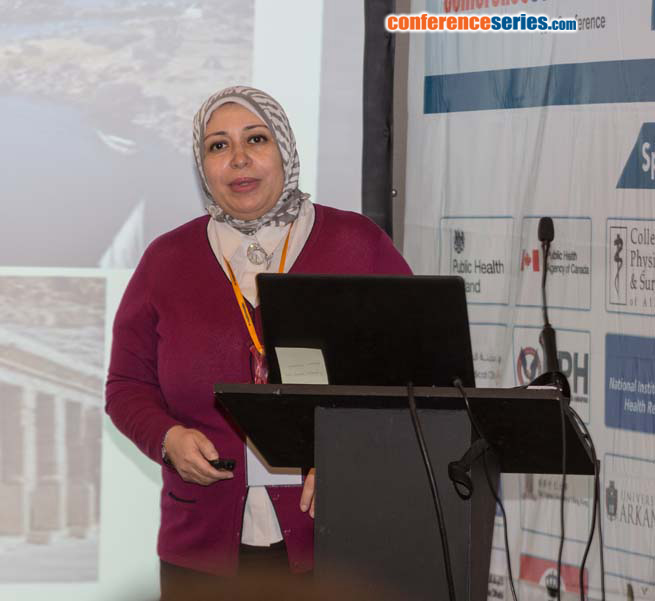
Jehan Ali El Kholy, Mervat El Anany, Dina Mostafa and Amani El Kholy
Cairo University Hospital, Egypt
Title: Surgical site infection SSI surveillance at Cairo University Hospitals: A success story lowering the incidence of SSI in a limited-resource country
Biography
Biography: Jehan Ali El Kholy, Mervat El Anany, Dina Mostafa and Amani El Kholy
Abstract
Background: CUH is a 5200 bed hospital with 98 operating rooms. SSI represents the most common infection in our hospital. SSI prolongs hospital stays, increases resistance to antimicrobials and represents an additional financial burden for hospitals, patients and their families increasing morbidity and mortality especially in countries with limited resources.
Aim: The objective of this study was to standardize the surveillance of SSI, report the rates of SSI and to lower the incidence of SSI in operations associated with high rates of SSI.
Methods: The study was conducted in CUH from March 2015 till February 2016. Training was provided to Infection Control Team on surveillance methods according to methods of National Healthcare Surveillance Network in USA (NHSN). Surveillance of the following surgeries was done craniotomies (CRAN), Coronary artery bypass grafting (CABG) and exploratory laparotomies (EL). The monitoring and evaluation (M&E) team evaluated the sensitivity and specificity of surveillance.
Results: M&E team identified 83% and 91% sensitivity and specificity of surveillance respectively. The annual incidence of SSI was 3.5 % of 368 operations after CRAN of them 1.1% superficial, 1.9% deep and 0.5% organ/space SSI. Klebsiella spp., represented 30.8%, Acinetobacter 23.1%, pseudomonas spp., 23.1%.The annual incidence of SSI is 2.9% of 590 operations after CABG of them 1.4% superficial and 1.5% deep SSI. Klebsiella spp., represented 33.3%, S. aureus 33.3%, Coagulase negative 13.3%. The annual incidence of SSI was 26% of 793 after EL of them superficial SSI was 19%, deep SSI was 5.3 and 1.9% organ/space SSI. Of those 97.1% were detected during the inpatient stay and 2.9% at readmission. Microbiological investigations were requested to all patients with SSI, 74.5% reported one organism and 13% reported 2 organisms. Distribution of microorganisms is as follows: E. coli 33.3%, Klebsiella spp. 30%, S. aureus 8.6%. Interventions were conducted to improve adherence with the timing of pre-operative antibiotic prophylaxis, peri-operative glycemic control, improving reporting of surveillance system, ensuring minimum requirements in terms of facilities and dedicated resources available. Interventions lowered the incidence of SSI from 43% in the first half, to 20% in the second half of the year. Risk factors for SSI were high ASA score, uncontrolled diabetes mellitus and emergency operations.
Conclusion: Surveillance of SSI could be successfully implemented and monitored. Results of surveillance were the basis of interventions that lowered the incidence of SSI. Interventions have successfully decreased the incidence of SSI from 42 to 20%.




